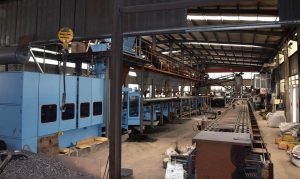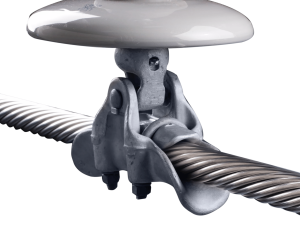Clay sand is a type of molding sand classified by the foundry industry based on the mud content in the original sand. Clay sand requires a mud content of less than or equal to 50%. Clay sand is mainly used for cast iron and non-ferrous metal castings.Clay sand is mainly used as an additive for molding sand and core sand used in cast iron and non-ferrous metal castings, improving wet strength and molding performance. Silicon sand, also known as silica or quartz sand.Sand casting is the production of castings using clay bonded sand as a molding material, which has a long history and is also the most widely used process method.
Customized clay sand casting is a popular manufacturing process used to create complex metal parts. It involves pouring molten metal into a sand mold, which is then cooled and removed to reveal the final product. This process is highly customizable, making it ideal for creating parts with unique shapes and sizes. In this article, we will explore the ins and outs of customized black sand casting, including its benefits, applications, and the steps involved in the process.
Benefits of Customized clay Sand Casting
It offers several benefits over other manufacturing processes. Firstly, it is highly customizable, allowing for the creation of complex parts with unique shapes and sizes. This makes it ideal for creating parts that cannot be produced using other methods. Secondly, it is a cost-effective process, as it requires minimal tooling and equipment. This makes it ideal for small-scale production runs. Finally, it is a versatile process, as it can be used to create parts from a wide range of metals, including aluminum, brass, bronze, and iron.
The advantages of clay sand casting are as follows:
The sand layer is thin, the quantity used is small, the production cost is low, and the waste is small. The used molding sand can be recycled and reused.
Changing the appearance quality of the blank, reducing cutting allowance, achieving high production rate and stable quality.
Improve the inherent quality of the product.
Good air circulation, no smoke or dust will be generated during pouring.
The appearance has low thermal conductivity and the sand core is easy to dry, so there is no drying room available.
The appearance is easy to lift, and the damage to the appearance is small. The damage to the sand core under normal pressure is not significant, and vibration is easy to detach the core.
Convenient for mass production, can save molders and coatings, and has high dimensional accuracy.
Bottom pouring can be used, suitable for the solidification process of steel, which can reduce shrinkage and reduce the possibility of producing bubbles and pinholes.
It is used in a wide range of industries, including automotive, aerospace, and construction. It is commonly used to create parts such as engine blocks, transmission cases, and pump housings. It is also used to create decorative parts, such as statues and sculptures. Additionally, it is used to create parts for the marine industry, such as propellers and rudders.
Our existing clay sand automatic line is an automated intelligent mechanical equipment with fast production speed and high yield.
It mainly adopts a fully automatic molding method, which can complete processes such as casting molding, pouring, cooling, and sand removal.
Suitable for clay sand molding process, it can produce large quantities of small and medium-sized castings, improve production capacity, save costs, produce castings with good quality and high accuracy, and can produce complex castings, mainly in power, construction, etc.
Customized clay sand casting is a versatile and cost-effective manufacturing process that is ideal for creating complex metal parts. It offers several benefits over other manufacturing processes, including its high level of customization and versatility.















-3-300x249.png)

